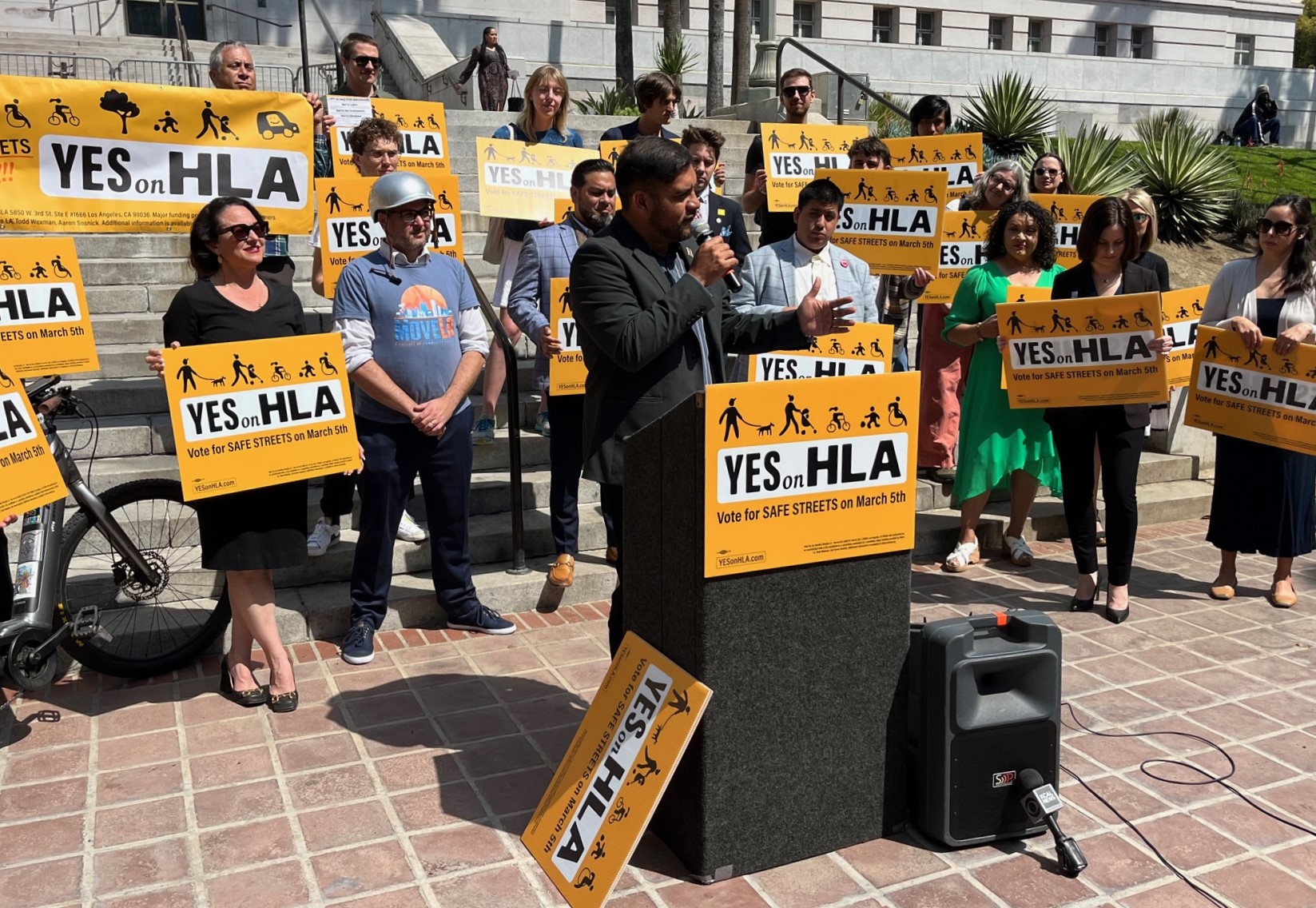Earlier this month L.A. City voters approved Measure HLA - the Healthy Streets L.A. Initiative - which mandates that the city implement its decade-old Mobility Plan when repaving streets. Measure HLA leads with 65.5 percent approval as of this morning (view latest election results). Though HLA won, the victory isn't official until the March 5 vote count is finalized.
In February testimony to the L.A. City Council (minute 3:00:40), City Administrative Officer Matt Szabo stated that "[Measure HLA] will be effective five weeks - roughly five weeks - after the election, should the voters approve the item."
"What that means is that," Szabo continued, "this body [City Council] will be asked to make funding decisions immediately."
Despite the city approving its Mobility Plan in 2015 and HLA qualifying for the ballot in 2022 - spurring the city to begin to draft a similar "Safe Streets" ordinance - today the city appears to have more questions than answers.
This past Wednesday, Measure HLA supporters rallied on the City Hall steps, then entered the building to give public comment at the City Council Transportation Committee meeting (see SBLA Twitter thread), which considered three motions related to HLA:
- Council file 15-0719-S26 - This Nury Martinez motion led to the city's proposed alternative Safe Streets ordinance. Last August, the City Attorney released a draft ordinance that councilmembers and advocates found lacking (read Streets for All's critique). One of the big differences is that the City Attorney's draft version of Safe Streets would apply during repaving greater than a quarter mile, while HLA applies to projects greater than an eighth of a mile.
- Council file 24-0131 - Councilmember Traci Park's anti-HLA motion, mostly requesting city departments report back on potential negative aspects of HLA. City departments (mainly the CAO and Bureau of Street Services) didn't wait for this motion to pass to present inflated HLA cost estimates prior to the election.
- Council file 24-0173 - Motion by HLA supporters looking to align the draft Safe Streets ordinance with Measure HLA, as well as other proactive planning/implementation actions.
The fairly slow-moving council legislative process doesn't appear to be capable of resolving any of this before HLA goes into effect. This week's meeting requested all these motions get further discussion at Transportation Committee on April 17 - likely after HLA has taken effect.
After that mid-April meeting, the motions could be heard in other committees (likely Public Works and Budget Committees) before a full Council vote, then it would take weeks or months for departments to report back.
There are lots of issues at stake. Here is a small sample:
- Which city department should be primarily in charge of HLA-mandated implementation? The city Public Works Department Bureau of Street Services (StreetsLA) is in charge of street resurfacing, while the Transportation Department is in charge of street striping (including bus lanes, bike lanes, all lane widths, parking). These departments work together imperfectly (see the worthwhile but half-hearted BLAST initiative), as neither really wants the other to call the shots. LADOT is likely to lead in the HLA dance, especially with regard to planning and scheduling. But LADOT and StreetsLA (where some leadership is seen as resistant to HLA) will need to partner very closely on all of this.
- Which projects does HLA apply to? The city needs to draw a clear line defining where HLA does and doesn't apply. Some projects may be already clearly well underway - maybe where, prior to the election, the city already signed a contract for a subcontractor to resurface something. The city departments are proposing exempting projects under construction, cleared environmentally, awarded grant funding, or are already 50 percent designed. The literal text of HLA wouldn't exclude these. Advocates are asking why the city is still clearing, designing and funding projects not in compliance with the plan the city approved in 2015.
- What's the plan? Some motion language is requesting city departments - led by LADOT - develop implementation plan (and budget) for HLA. This is likely to impact the city's hodgepodge opaque politicized process for capital improvements. Many (especially Investing in Place) have called for a more strategic transparent values-based approach, centered on a five-year Capital Improvement Plan (CIP). It's a wonky ask, but developing and implementing a proactive CIP could build trust, save lives, advance equity, help the climate/environment.
Lots more to come as HLA-mandated implementation of the city Mobility Plan gets underway next month.





